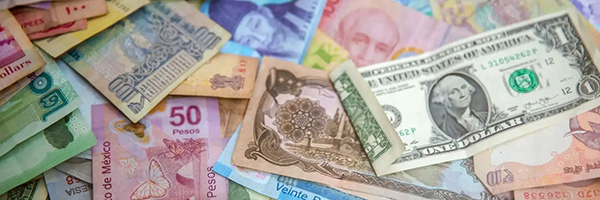Latin America’s Plan Against Inflation ‘a New Scenario of Regional Integration’
 Orinoco Tribune, March 5, 2023 — Mexico, Argentina, Brazil, Colombia and Cuba are leading a project to contain and reduce inflation in Latin America. According to experts consulted by Sputnik, the plan is viable and could lead to the region’s economic diversification.
Orinoco Tribune, March 5, 2023 — Mexico, Argentina, Brazil, Colombia and Cuba are leading a project to contain and reduce inflation in Latin America. According to experts consulted by Sputnik, the plan is viable and could lead to the region’s economic diversification.
According to Mexican President Andrés Manuel López Obrador, the plan consists of the commercial exchange of food imports and exports, as well as other goods, to reduce the consequences of economic problems in the region.
Producers, distributors and merchants will be invited to participate in the agreement. According to the most recent data, inflation is reported at 5.63% in Brazil, 7.76% in Mexico, 13.12% in Colombia, 42.08% in Cuba and 98.8% in Argentina.
“This has to do with food, obtaining prices, removing tariffs and the barriers that prevent food from being obtained at a good price for the domestic market of the countries,” López Obrador stated.
Although Argentinian President Alberto Fernández indicated that only Cuba, Brazil, Mexico, Colombia and Argentina would be included in this plan, López Obrador said he will also call Honduran President Xiomara Castro, Chilean President Gabriel Boric and Bolivian President Luis Arce. The latter revealed that he had already held a call with the Mexican president in which he agreed to join the plan.
In an interview with Sputnik, Moritz Cruz, PhD in Economics from the University of Manchester, indicated that the plan is viable despite the disparity of the economies, as the plan is focused on reducing tariffs and taxes.
“If what they are looking for is to reduce inflation through exports, lower tariffs and taxes, it could have the expected effect,” said Moritz Cruz.
Cruz explained that just over half of the inflation in Mexico is due to rising food prices. Thus, the plan could be convenient for the López Obrador government since the South American nations are major exporters of these products.
On the other hand, Cruz pointed out that Mexico could export oil or some manufactured goods. However, he clarified that it is necessary to study in depth what exactly is causing the rise in inflation in each country in order to identify what will be exchanged.
Mexico looks South
Moritz Cruz recalled that “the strong leagues” of South America are not with the United States but with China. So this agreement, he said, is a good opportunity for Mexico to get closer to these countries to boost its trade with them.
“With this, Mexico could diversify its markets. Not exactly move away from the United States because that will not happen, but it may be the first step that allows Mexico to diversify towards the south,” Cruz said. “This idea of fighting inflation by means other than monetary is a good idea, and indeed, it could have the expected effect of reducing this index,” he added.
Octavio Dorantes, an economist and academic from the National Autonomous University of Mexico (UNAM), said that the plan paints another regional scenario that is headed by Mexico.
“It is a new scenario of regional integration that is headed by Mexico, and we have to see how it takes shape,” Dorantes said.
Experts agree that Mexico could be a good exporter of manufactured goods and energy, while it could benefit from the abundant raw materials in South American countries.
“The answers are always sought from above. We are always aware of what is happening with the United States and Canada,” said Dorantes. “But perhaps the real answers can come from below, from the other countries with which we share history. Latin American integration could help a lot to solve and combat these problems, both economic and sociopolitical.”
On April 5, President López Obrador will call Xiomara Castro, Gabriel Boric and Luis Arce to discuss their possible integration into the plan. Meanwhile, teams from the nations involved will hold meetings to carve out the guidelines of the project.
